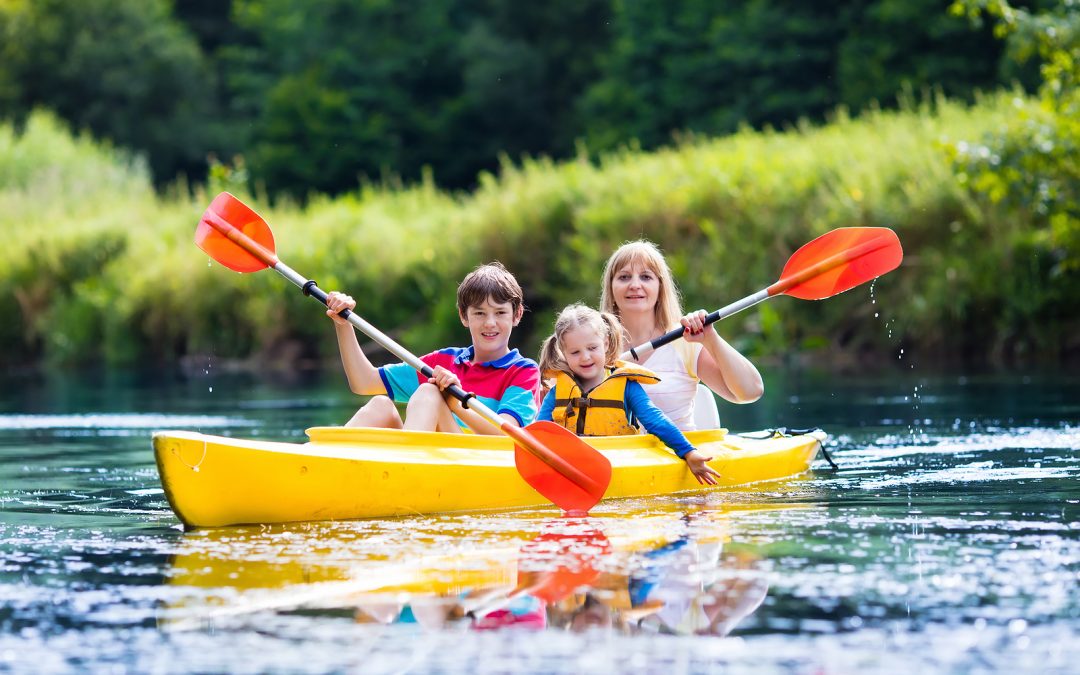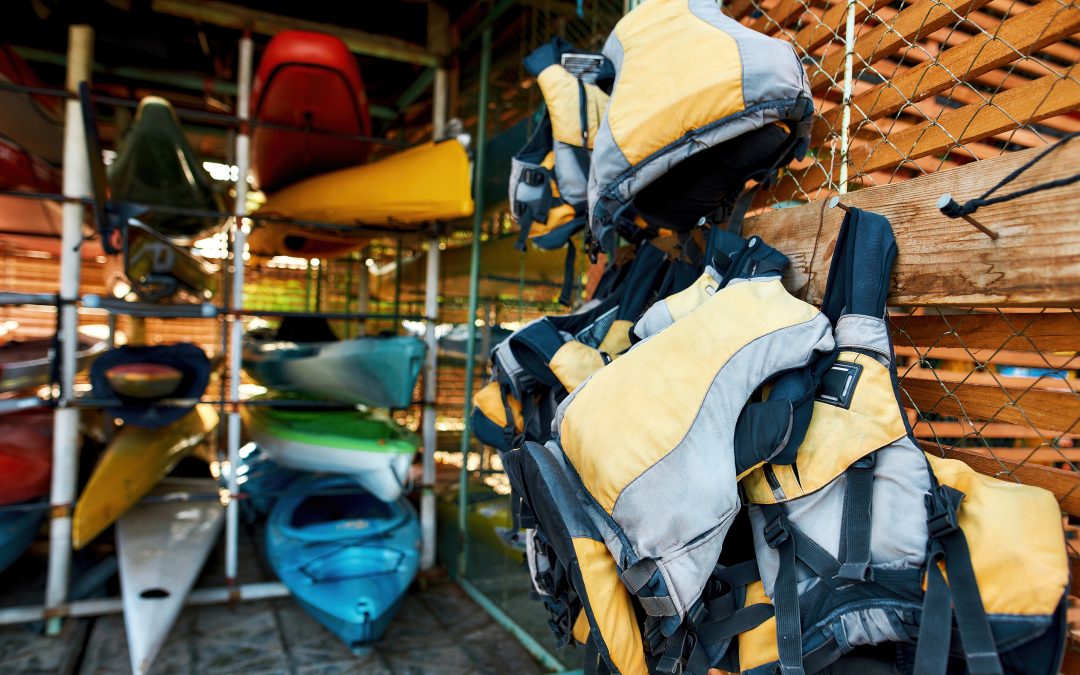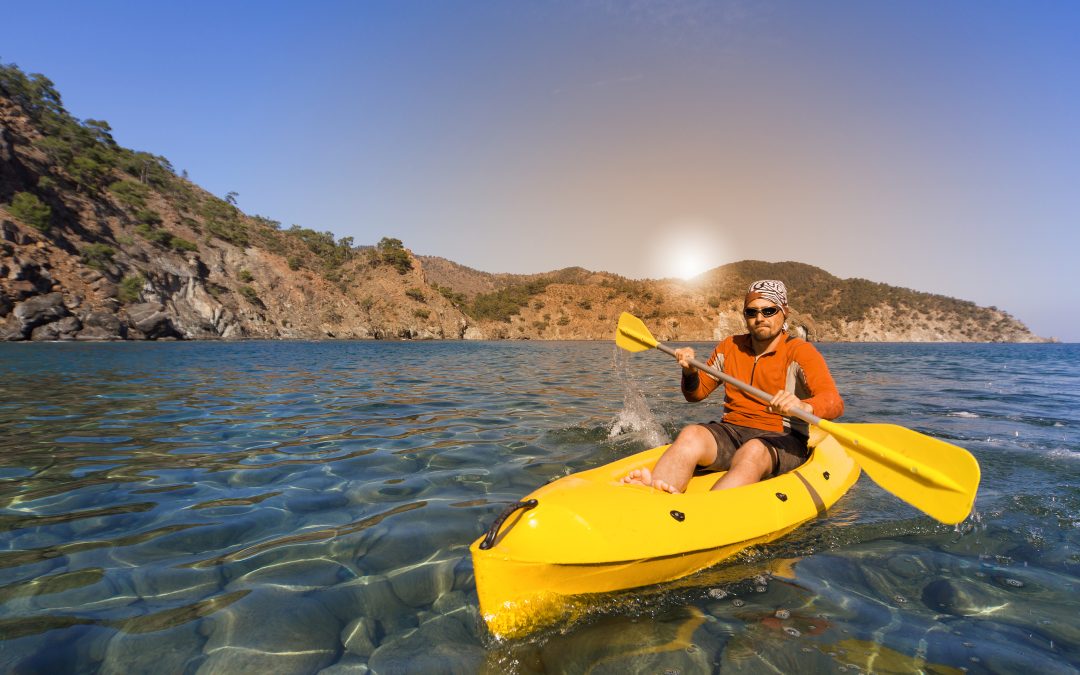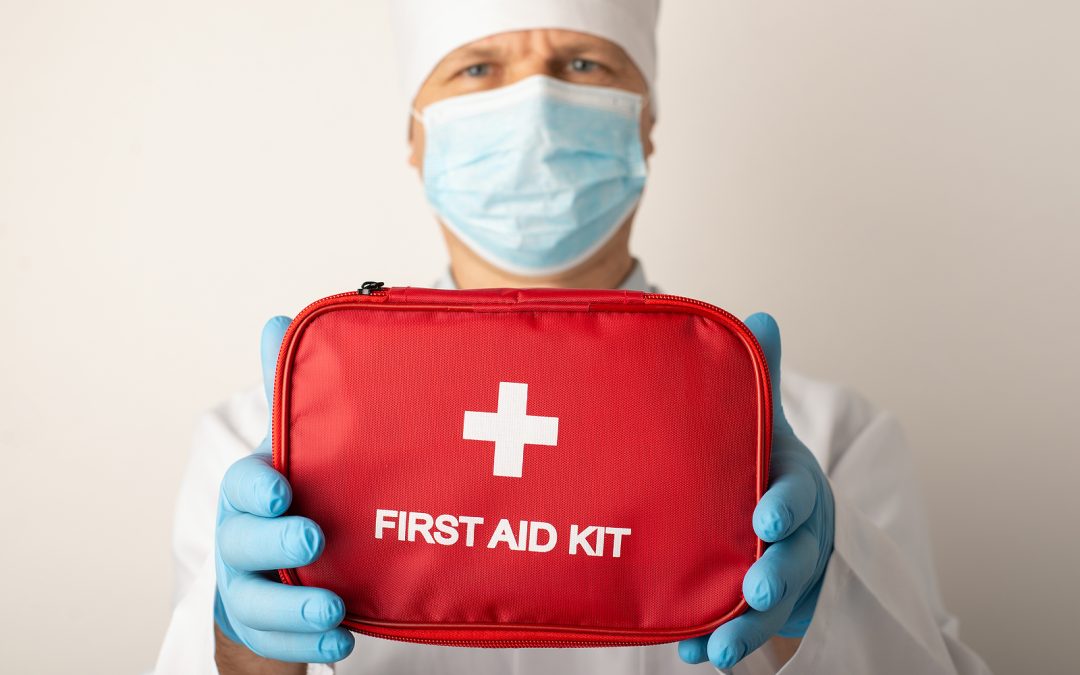Kayak fishing might just be the thing for you! This sport has gained a lot of popularity in recent years, and for good reason. It offers an unparalleled fishing experience that brings you closer to the water than ever before. But, with so many different types of fishing gear available, it can be overwhelming to choose the right one for your kayak. Don’t worry, I’ve got you covered! In this guide, I’ll provide you with all the essential information you need to select the best fishing tackle for your kayak fishing adventure. So, let’s dive in and get started!

A well-equipped tackle box is crucial for kayak fishing as it determines how effective your fishing rod will be. When selecting the best type of tackle box to use in your kayak, keep in mind the need for a waterproof and lightweight model to protect your baits, hooks, and tackle from the elements, while also saving space. This guide on important kayak fishing gear can provide further tips.
Various lures and baits are essential items in your tackle box. Selecting lures appropriate for the target species and fishing conditions can significantly impact your success. Topwater lures, for instance, are highly effective in provoking a reaction strike from aggressively feeding fish like redfish, snook, trout, and even tarpon, making them a great choice for various species. Experimenting with different lure types will help you tailor your approach for optimal results.
Understanding Kayak Fishing
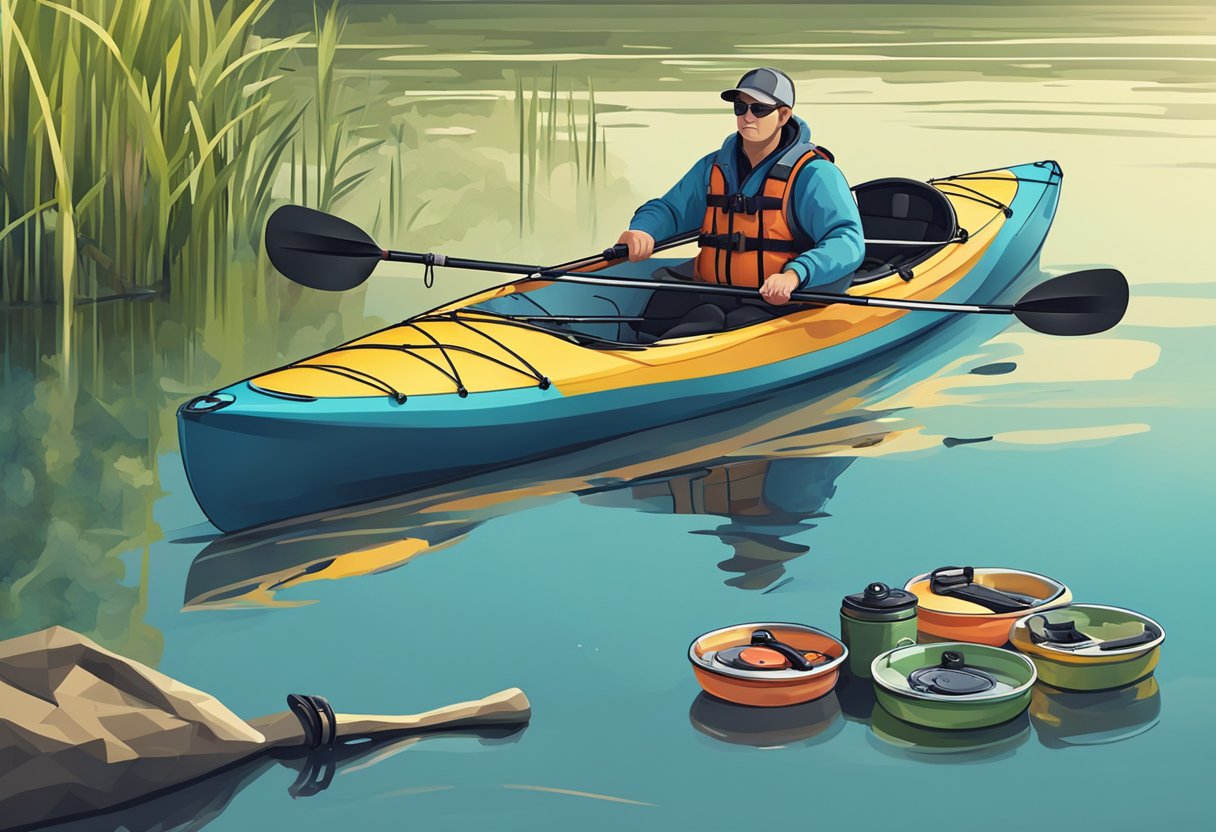
Kayak fishing is a popular sport that combines the excitement of angling with the adventure of kayaking. It allows anglers to access hard-to-reach spots, increases their stealth, and provides an intimate connection with nature. Before diving into the world of kayak fishing, it’s important to understand the unique challenges and gear requirements.
One of the main differences between kayak fishing and traditional angling is the limited storage space on a kayak. Therefore, selecting compact and practical fishing tackle is essential. Kayak fishers need to prioritize their gear and opt for tackle that can handle multiple situations. Rods and reels should be versatile, able to withstand exposure to water, salt, and sand .
When it comes to storing tackle on a kayak, organization is key. Using tackle boxes, dry bags, and compartment storage systems will make it easier for anglers to locate their gear and switch between different setups quickly, depending on the fishing situation .
Another factor to consider in kayak fishing is the physical aspect. Paddling while fishing can be demanding, so it’s crucial to invest in a comfortable and stable kayak. Pedal-driven or motorized kayaks can also be helpful if the angler wants to cover a larger area or focus more on fishing than paddling .
Here’s a list of essential kayak fishing gear:
- Sturdy fishing rod and reel
- High-quality tackle (lures, hooks, and sinkers)
- Tackle storage solutions (dry bags, tackle boxes, and organizers)
- Personal Floatation Device (PFD)
- Paddle or pedal drive system
- Rod holders and anchor systems
- Waterproof GPS or fishfinder
By understanding the specific challenges of kayak fishing and selecting the appropriate gear, anglers can ensure a successful and enjoyable experience on the water. Integrating the right fishing tackle and gear into your kayak setup will increase your chances of landing that elusive catch and make your time on the water more enjoyable.
Choice of Tackle Box

When selecting the best fishing tackle for kayakers, the choice of tackle box plays a crucial role in ensuring a seamless and enjoyable fishing experience. A good tackle box should be both functional and easy to use on a kayak.
One of the most popular options for kayakers is the Plano Edge Flex Series Utility Box. This box features adjustable compartments, waterproof seals, and rust-preventive components, making it an ideal choice for anglers in various fishing conditions. It is a compact and versatile option that can be customized to fit different types of fishing gear.
Another option to consider is the Plano 3740 Waterproof StowAway. This tackle box is designed to keep your gear dry and secure, even in the most challenging weather conditions. Its transparent lid lets you easily identify your tackle, and the customizable latches offer the convenience of quickly accessing what you need.
Some other options that work well for kayakers include:
Table 1: Tackle Box Options For Kayakers
| Tackle Box | Type |
|---|---|
| Plano Edge Flex Series Utility Box | Hard Box |
| Plano 3740 Waterproof StowAway | Hard Box |
| Wild River 3606 Backpack | Fishing Tackle Backpack |
| Spiderwire Wolf Bag | Soft Fishing Tackle Bag |
| Striper Saltwater Case | Hard Box |
Finding the right tackle box for kayaking involves considering factors such as waterproofing, durability, and accessibility. It’s essential to select a box that not only fits your gear but also withstands the harsh conditions you may encounter during your fishing adventures.
Fishing Rods for Kayaks
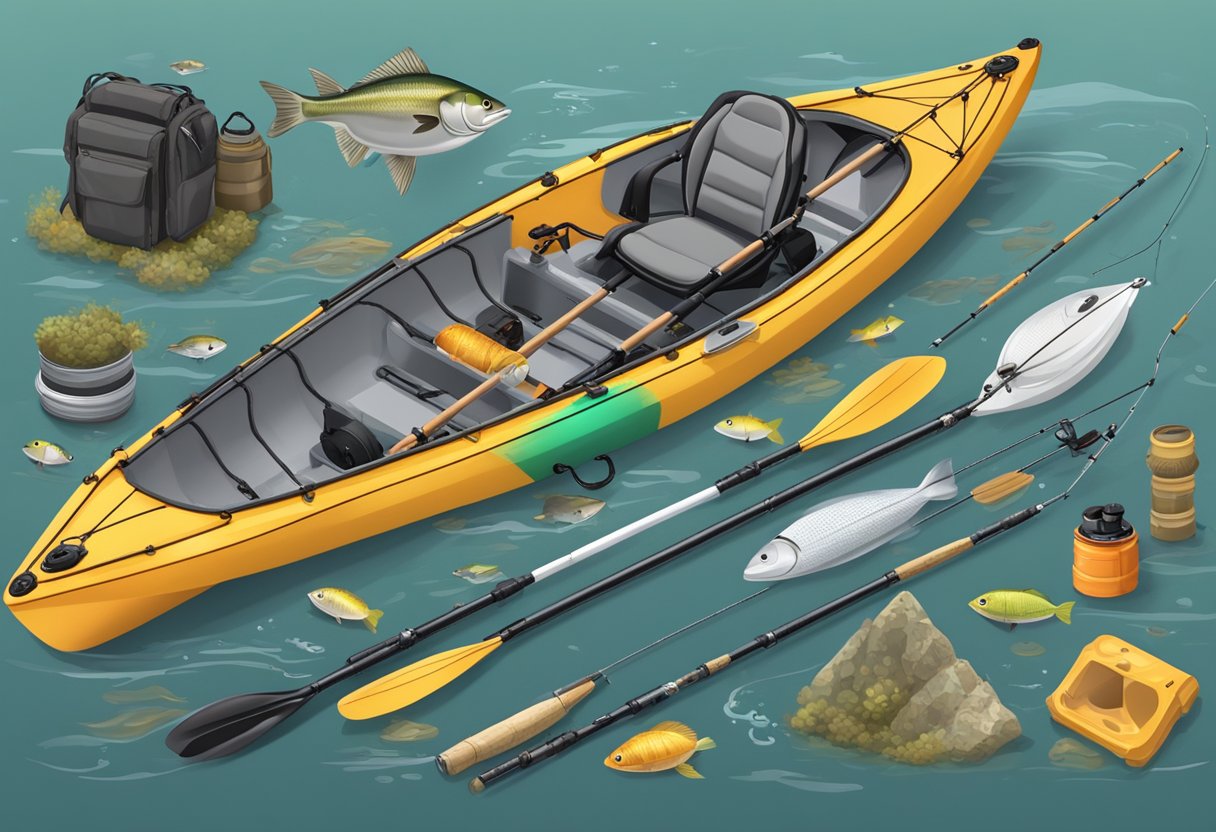
Material
There are several types of materials used for making fishing rods, such as fiberglass, graphite, and composite materials. Fiberglass rods are known for their durability and strength, making them a good option for kayak fishing in rough conditions. Graphite rods are lightweight and sensitive, allowing anglers to detect subtle bites and feel the lure’s movement through the water. Composite rods, combining both graphite and fiberglass, offer a good balance between durability and sensitivity. For example, the St Croix Mojo Inshore Spinning Rod is made from a high-quality blend of graphite and fiberglass materials.
Length
When it comes to kayak fishing, rod length plays an essential role in both casting and fighting fish. A shorter rod, typically around 6 to 7 feet, is suitable for kayak fishing as it provides better control and easier maneuverability within the confined space of a kayak. In addition, a light-fast to medium-fast action rod with a length of 7 feet is a great choice for light tackle fishing.
Power
Rod power is the amount of force required to bend the rod. There are various levels of power, ranging from ultra-light to heavy. Selecting the right rod power depends on the targeted fish species and the tackle being used. For kayak fishing, a medium or medium-heavy power rod is usually ideal, as it can handle a variety of fish sizes and provide enough backbone for setting hooks while maintaining control. An example of a medium power rod suitable for kayak fishing is the Ugly Stik Elite Spinning Rod.
Action
Rod action refers to the point along the rod blank where it bends when pressure is applied. Faster action rods bend primarily at the tip, while slower action rods bend throughout the length of the rod. For kayak fishing, a fast or medium-fast action rod is generally preferred, as it offers better casting accuracy and a more sensitive feel when detecting bites. A rod rated fast, such as the Daiwa Sealine Xtreme Interline Falcon, bends at the tip but stays stiff throughout the rest of the rod, providing longer and more accurate casts along with heightened sensitivity.
Choosing Fishing Line

Choosing the right fishing line for kayak fishing can greatly impact your overall experience. We will examine three main types of fishing lines commonly used by kayak anglers: Monofilament, Fluorocarbon, and Braided.
Monofilament
Monofilament line is the most popular choice for many anglers due to its versatility and affordability. It is made from a single strand of nylon material, making it flexible and easy to knot. It’s a great choice for beginners, as it is simple to use and often recommended with a six-pound test line for its balance of strength and stretch.
Pros:
- Affordable
- Easy to handle and knot
- Wide range of colors available
Cons:
- Less abrasion resistance compared to other lines
- Stretches under pressure which can reduce sensitivity
Fluorocarbon
Fluorocarbon line is known for its near-invisibility in water, making it an excellent choice for clear water conditions. It is made from a polyvinylidene difluoride material, which gives it a refractive index similar to water. Fluorocarbon does not absorb water and thus maintains its strength when wet.
Pros:
- Near-invisible in water
- High abrasion resistance
- Lower stretch compared to monofilament
Cons:
- More expensive than monofilament
- Slightly stiffer, making it more difficult to handle
Braided
Braided line is made from multiple strands of material woven together, which results in a very strong and durable line. Anglers often choose braided line for its high strength-to-diameter ratio and minimal stretch. It is suitable for heavy cover fishing or jigging in deep waters where sensitivity is crucial.
Pros:
- High strength-to-diameter ratio
- Minimal stretch for increased sensitivity
- Long-lasting durability
Cons:
- More visible in water compared to fluorocarbon
- Can be harder to knot securely
When selecting the right fishing line for your kayak angling adventures, consider the environment, water conditions, and the type of lures you plan to use. No single line type is perfect for every situation, so experiment with different lines to find the best fit for your needs.
Selecting Fishing Hooks

When choosing the best fishing tackle for kayakers, it’s essential to consider the right hooks. In this section, we will discuss hook size and hook type to help you make the most suitable selection for your needs.
Hook Size
The size of the hook is crucial in determining its effectiveness in catching fish. Generally, you should match the hook size with the size of the bait and the target fish species. A smaller hook is more appropriate for smaller baits and fish species, while a larger hook is better suited for larger baits and fish. It’s essential to maintain balance between the bait size and the hook size to ensure success in catching fish.
- Size 1/0 to 4/0: Ideal for small baits like live minnow or earthworms targeting panfish, crappie, or small bass
- Size 5/0 to 7/0: Suitable for medium-sized baits targeting larger fish species like catfish, striped bass, or big largemouth bass
- Size 8/0 and above: Perfect for large baits like live baitfish or cut bait for targeting trophy fish such as big catfish, muskies, or saltwater species
Hook Type
There are various hook types, each with unique features and optimal use cases. Here are some of the most common hook types and their applications for kayak fishing:
- J-Hooks: These hooks have a J-shaped design and are versatile for various fishing techniques and bait types. They are ideal for lure fishing or when using a bait covering the hook, like leeches or soft plastics.
- Circle Hooks: Characterized by a circular shape with an inward-pointed barb, these hooks are excellent for real fishing baits like live or cut bait, particularly when targeting saltwater species. Circle hooks are self-setting and help prevent gut-hooking, which is perfect for catch and release.
- Treble Hooks: These hooks consist of three J-hooks joined from the shank, offering increased hooking potential. Treble hooks excel in topwater and crankbait fishing scenarios, especially for lures with erratic actions.
- Weedless Hooks: As the name suggests, these hooks feature a guard to prevent them from getting snagged or tangled in weeds or other underwater structures. Weedless hooks are perfect for fishing in weedy or snaggy areas where vegetation is abundant and fish like to hide.
Selecting the appropriate fishing hooks is crucial for success in kayak fishing. By considering the hook size and type, anglers can tailor their tackle to the specific fishing conditions and target species, thus increasing their chances of landing a catch.
Bait Selection
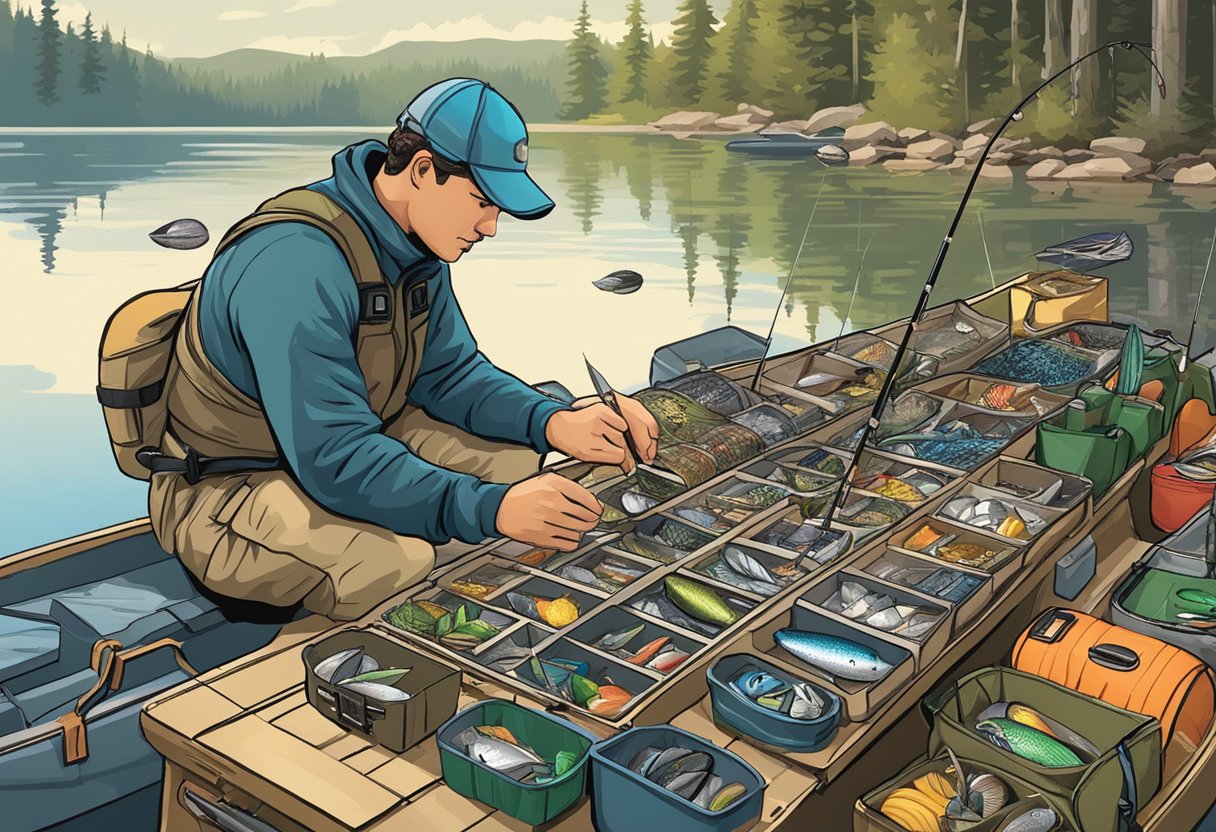
Artificial Baits
Kayak anglers should consider a variety of artificial baits to cover different fishing scenarios. Below is a brief overview of some of the most popular and effective types of artificial lures for kayak fishing:
- Soft Plastic Baits: These versatile lures come in numerous shapes and sizes, such as worms, grubs, and swimbaits. Soft plastics are perfect for fishing in shallow or deep water, as they can be rigged in different ways like Texas rig, Carolina rig, drop shot, or weighted to mimic real prey. The lightly weighted swimbaits is a good choice for bottom water fishing.
- Crankbaits: These hard-bodied baits dive to various depths when retrieved, imitating baitfish moving through the water. Crankbaits come in a multitude of colors, sizes, and running depths, making them suitable for fishing in different water conditions and targeting different species.
- Jigs: Skirted jigs are particularly useful for targeting bass, as bass often feeds on crayfish. Combining a skirted jig with a crawfish trailer can maximize your chances of attracting them in their natural environment.
- Spinnerbaits: These lures include a weighted head and a spinning blade that generates flash and vibration in the water, drawing in fish from a distance. Spinnerbaits work well for targeting species like pike and bass in murky water conditions or heavy cover.
Natural Baits
Using natural baits is an effective approach for kayak fishing as they can work well in various conditions and attract multiple fish species. Below are a couple of popular natural baits to consider:
- Live Minnows: This generalist bait can lure various fish species, from panfish to predator fish like bass and pike. Live minnows can be used in different rigs, such as under a bobber or on a jig head, allowing anglers to adapt to changing fishing conditions (Tru Turn Aberdeen 856ZS hooks in #2 to #6 size are recommended for live minnows).
- Nightcrawlers: Known as a staple bait for freshwater fishing, nightcrawlers are effective in attracting species like bass, catfish, and walleye. They can be fished with a simple split shot rig or on a hook with a bobber.
When selecting the best fishing tackle for kayak anglers, it’s important to have a mix of artificial and natural baits in your arsenal. Incorporating various types of bait allows you to adapt to different fishing situations and target multiple species at once, increasing your success on the water.
Kayak Fishing Reels
When choosing the best fishing tackle for kayakers, reels play a crucial role in your overall fishing experience. There are primarily two types of reels suitable for kayak fishing: spinning reels and baitcasting reels.
Spinning Reels
Spinning reels are popular among kayak anglers due to their versatility and ease of use. These reels can handle various line types, including monofilament, braided, and fluorocarbon lines. Additionally, spinning reels are known for their ability to cast long distances and for their precision in tight spaces. According to Master Kayak Fishing, spinning reels are considered the best type of reel for kayak fishing because they offer a good balance between strength and ease of use.
Some key features of spinning reels include:
- Line Capacity: Spinning reels can hold a large amount of line, making them suitable for long casts.
- Drag System: A quality drag system is essential to fighting big fish, and spinning reels often have a smooth and consistent drag.
- Gear Ratio: Spinning reels typically have a medium gear ratio, making them suitable for a variety of fishing techniques.
Baitcasting Reels
While baitcasting reels are more challenging to master, they offer several advantages to experienced kayak anglers. Baitcasting reels provide greater control and accuracy, allowing for precise lure placement and enabling anglers to target specific areas more effectively. However, baitcasting reels have a steeper learning curve and are more prone to line tangling, especially for beginners.
Key features of baitcasting reels include:
- Gear Ratio: Baitcasting reels offer a range of gear ratios, from slow to fast, which can be helpful for different fishing techniques and species. As mentioned by Texas Kayak Fisher, gear ratios are typically categorized as slow (5.5:1 to 6.6:1), medium (6.7:1 to 7.9:1), and fast (8.1:1 and higher).
- Braking System: Baitcasting reels often have adjustable braking systems, helping to fine-tune casting distance and prevent backlash.
- Line Recovery: Baitcasting reels usually have higher line recovery rates than spinning reels, which is beneficial when reeling in larger or stronger fish.
When selecting a reel for kayak fishing, consider the types of fishing techniques and species you plan to target, as well as your skill level and personal preferences. Spinning reels are recommended for most kayak anglers due to their versatility, while baitcasting reels may be preferred by those who seek more control and precision.
Safety Equipment
When it comes to kayak fishing, safety should always be a top priority. Selecting the right safety equipment can significantly reduce the risk of accidents and make your fishing experience more enjoyable. In this section, we will discuss some essential safety gear that every kayak fisherman should have on board.
First and foremost, it is crucial to wear a personal flotation device (PFD). A PFD will keep you afloat if you accidentally end up in the water and can be a lifesaver in case of an emergency. There are PFDs specifically designed for kayak fishing that come with extra pockets and attachment points for fishing gear. Ensure your PFD fits snugly and comfortably, as you will be wearing it throughout your fishing trip.
Another essential safety item to have on board is a marine whistle. Whistles are an effective way to signal for help or communicate with other paddlers in case of an emergency. As they are compact and lightweight, it is easy to attach them to your PFD for quick access when needed.
Kayak fishermen should also carry a knife with a blunt-tipped, corrosion-resistant stainless-steel blade. This tool is not only useful for cutting fishing line or bait but can also help in rescue situations. For instance, you might need to cut a tangled line or free yourself from debris in the water. A knife with a sheath can be easily attached to your PFD for quick access during emergencies.
Proper communication equipment is vital to ensure your safety on the water. A waterproof VHF radio or a personal locator beacon (PLB) can be a lifesaver in case of an emergency or if you get separated from your group. These devices can quickly relay your location to rescue teams, significantly increasing the chances of a successful rescue operation.
Finally, consider packing a small first aid kit in a waterproof container. This kit should include essentials like adhesive bandages, gauze pads, antiseptic wipes, and any personal medications you may need. Additionally, a small repair kit containing items like duct tape, zip ties, and a multi-tool can be helpful in addressing any minor gear malfunctions on the water.
To summarize, every kayak fisherman should prioritize safety by including the following equipment in their gear:
- Personal Flotation Device (PFD)
- Marine whistle
- Knife with a sheath
- Waterproof VHF radio or Personal Locator Beacon (PLB)
- First aid kit
- Repair kit
By equipping yourself with these essential safety items, you can confidently enjoy your kayak fishing adventure knowing that you are well-prepared for any potential emergencies.
Weather Considerations in Tackle Selection
When selecting the best fishing tackle for kayakers, it’s important to consider how weather conditions can affect your choice of gear. In this section, we’ll explore how various elements of weather can influence your tackle selection and provide some tips for making optimal choices.
Temperature: The water temperature plays a major role in determining fish behavior and their preferred habitats. In colder water, fish are less active and have a slower metabolism, so it’s important to use slower-moving lures that won’t scare them away. For example, select jigs and soft plastics to entice fish in colder temperatures. Conversely, warmer water leads to more active fish, so consider using faster-moving lures like crankbaits and spinnerbaits.
Light Conditions: Fish are sensitive to light conditions, which can directly affect their feeding habits. On bright, sunny days, fish often retreat to deeper, cooler water to avoid the sunlight. In these circumstances, use deep-diving lures or weighted baits to target them. On the other hand, overcast days can make fish more likely to feed in shallower waters, so consider using shallow-running lures and topwater baits.
Wind: Wind plays a significant role in determining fish behavior and can influence bait selections. Strong winds can cause an increase in the water’s turbulence, making it harder for fish to see and detect lures. In these conditions, consider using louder, more visible baits such as spinnerbaits or crankbaits that create more vibration and noise, attracting fish from a greater distance.
Conclusion
In conclusion, selecting the best fishing tackle for kayakers involves considering the specific needs and preferences of the individual angler. It is essential to prioritize portability, durability, and functionality when choosing rods, reels, lines, and lures for kayak fishing. Additionally, seeking advice from experienced kayakers and fishing professionals can offer insightful information about the most suitable tackle for various fishing conditions. By carefully evaluating these factors and staying informed about the latest gear developments, kayakers can enhance their fishing experience and maximize their chances of success on the water.



